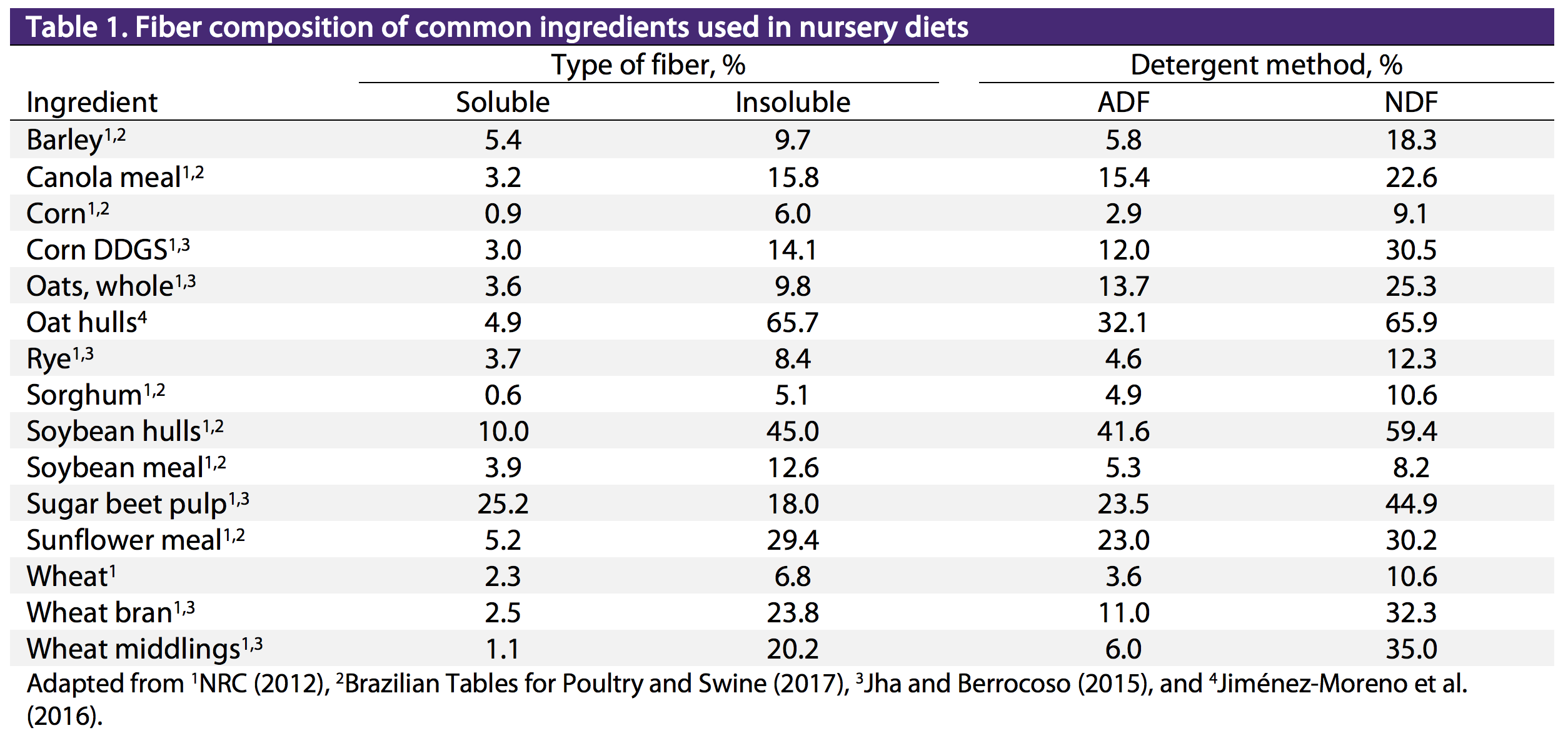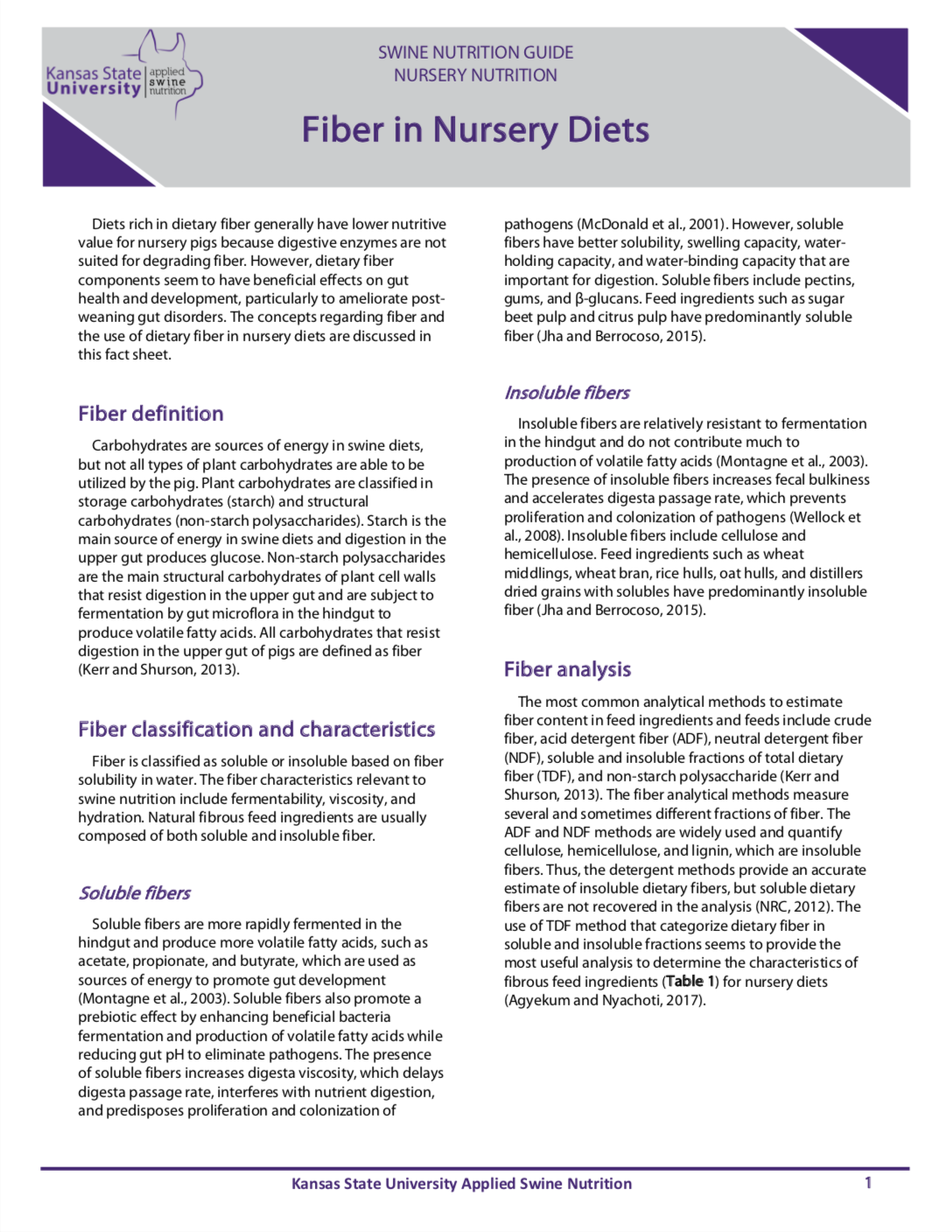Fiber analysis
The most common analytical methods to estimate fiber content in feed ingredients and feeds include crude fiber, acid detergent fiber (ADF), neutral detergent fiber (NDF), soluble and insoluble fractions of total dietary fiber (TDF), and non-starch polysaccharide (Kerr and Shurson, 2013). The fiber analytical methods measure several and sometimes different fractions of fiber. The ADF and NDF methods are widely used and quantify cellulose, hemicellulose, and lignin, which are insoluble fibers. Thus, the detergent methods provide an accurate estimate of insoluble dietary fibers, but soluble dietary fibers are not recovered in the analysis (NRC, 2012). The use of TDF method that categorize dietary fiber in soluble and insoluble fractions seems to provide the most useful analysis to determine the characteristics of fibrous feed ingredients ( Table 1 ) for nursery diets (Agyekum and Nyachoti, 2017).

